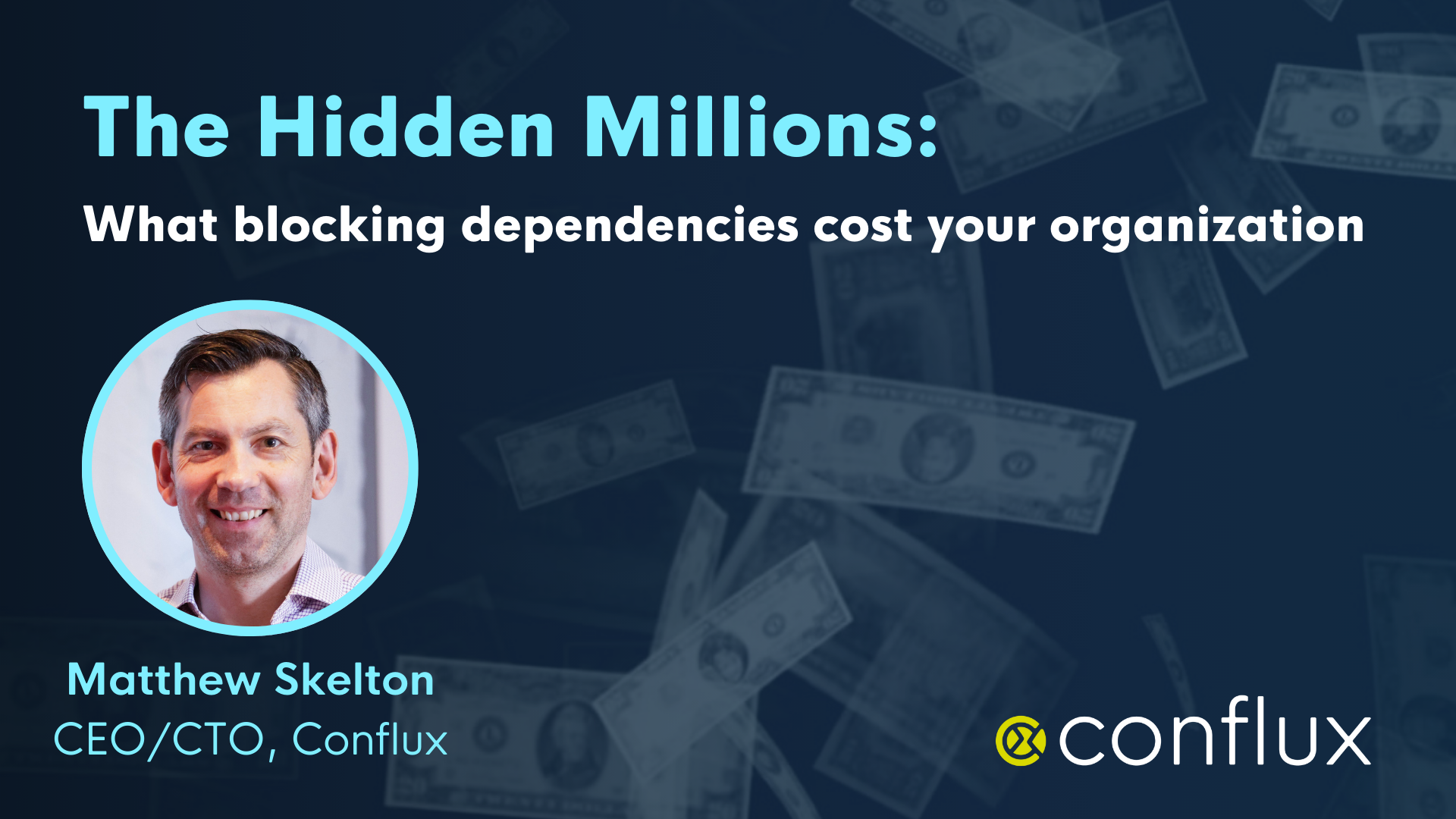Insights on fast flow from Conflux
Fast flow embraces decoupling, autonomy, asynchrony, and eventual consistency for both technology and for organisation design, together with a humanistic, team-first approach.
These insights explain and explore how organizations can encourage an ecosystem suitable for fast flow.
Georgina Shute reflects on a roundtable led by Matthew Skelton and Renee Hawkins, revealing why building adaptive teams requires more than technology. Organizations are pouring resources into AI tools expecting them to close skills gaps, while ignoring the human connections that drive real capability growth.
Flow matters. Blocking dependencies create long wait times between teams, and imposing significant drains on your organization’s resources, but few leaders really quantify the actual financial impact of teams waiting on other teams to release work. We talk about the root causes of these dependencies and how to mitigate them.
Structuring teams for AI adoption is a challenge for every organization, but how do you structure your teams if you are working within Machine Learning and AI development? Is Team Topologies still effective in this context? We examine how Team Topologies principles also provide robust approaches for structuring organizations developing AI and ML.
When adopting AI in any enterprise, we can learn valuable lessons from the historic revolution in cloud computing.
In 2008, Amazon’s EC2 scalable cloud infrastructure service went into full production and quickly demonstrated the power of cloud server capabilities. This period marked a fundamental shift in how organizations delivered technology solutions.
Successful AI adoption doesn't demand a complete reinvention of organizational principles — instead, it requires their intelligent evolution.
Organizations embracing AI capabilities need to look beyond surface-level implementation to achieve sustainable integration.
Transitioning from traditional delivery models to continuous delivery presents unique challenges.
We've teamed up with ABC Fitness’ ABC Glofox to showcase how they achieved success with fast flow, with analysis and tips on how you can apply these changes in your organization. This is the second in our series of articles exploring how ABC Glofox made the shift to continuous delivery and achieved remarkable results.
Knowledge sharing is a strategic organizational practice in which teams come together to exchange expertise and learn from each other. This creates more effective and connected organizations that can deliver value quickly.
Leading organizations are seeing remarkable results from adopting fast flow practices and Team Topologies approaches. JP Morgan reduced dependencies by 60% and increased flow velocity by 73% across 7,500 colleagues. LSA's research of 410 companies shows highly aligned organizations grow revenue 58% faster and are 72% more profitable.
The impact is significant - just one hour of daily wait time costs a medium-sized organization $8 million annually. Organizations optimizing for flow see benefits across operations, finances, and culture - from reduced dependencies and faster delivery to improved profitability and employee engagement. The evidence is clear: investing in team design, organizational alignment, and flow optimization delivers substantial returns.
Software development is a fast-paced industry, and the landscape is constantly shifting. From the early days of throwing code "over the wall" to operations teams, to the DevOps revolution, and now to the era of platform engineering - the journey has been one of continuous improvement and adaptation. Today, we're witnessing another seismic shift as Artificial Intelligence (AI) enters the fray, promising to revolutionize how we approach software delivery and operational excellence.
From Feature Factory to Customer-Centric Innovation: ABC Glofox's Transformation Journey.
In the competitive world of fitness technology, ABC Fitness’ ABC Glofox, a studio and gym membership management software provider, faced a common challenge for innovative software companies: the risk of becoming a 'feature factory' while losing sight of their main objectives. This is the first in a series of articles exploring how ABC Glofox made the critical shift from feature-driven development to outcome-focused innovation using fast flow.











